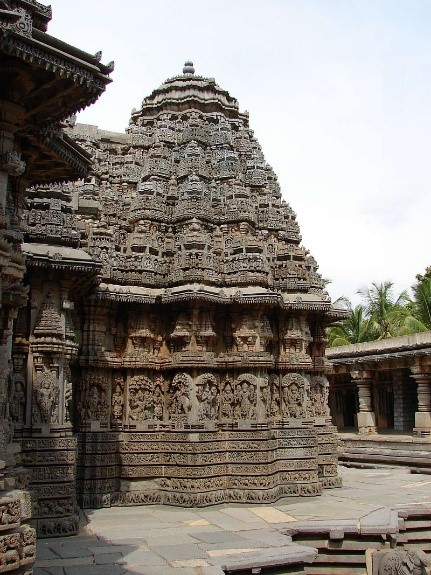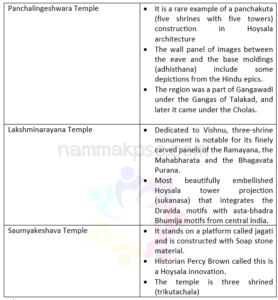Published on: June 24, 2023

Hoysala legacy
Hoysala legacy

Why in news? Tourism Department can promote lesser-known monuments which are Hidden gems that beckon attention of history buffs in Mandya.
Highlights:
Features of Hoysala architecture
- The temple retains Western Chalukya architecture influence
- This style of architecture was often referred to as an amalgamation between the Dravidian and Indo-Aryan forms
- Hoysala architects were masters of soapstone.
- The temples may be built upon a platform raised by about a metre called a “jagati”
- Depending on the number of shrines, the temples are classified as ekakuta (one), dvikuta (two), trikuta (three), chatushkuta (four) and panchakuta (five).
- One of the main features of Hoysala architecture and sculptures is the mandapa.
- It is the prayer hall that is entered through an intricately designed lintel. This ornamented overhead lintel is known as the ‘makaratorana’
- The ceiling of the mandapa has been adorned with sculptures that arise out of the Indian mythology
- A sculpted figure or salabhanjika or madanika is one of the main feature of Hoysala architecture
- The shapes of these vimanams are either stellate (star shaped) or staggered square.
- The pillar images known as ‘sthamba buttalikas’ show the influence of the Chola art and architecture


